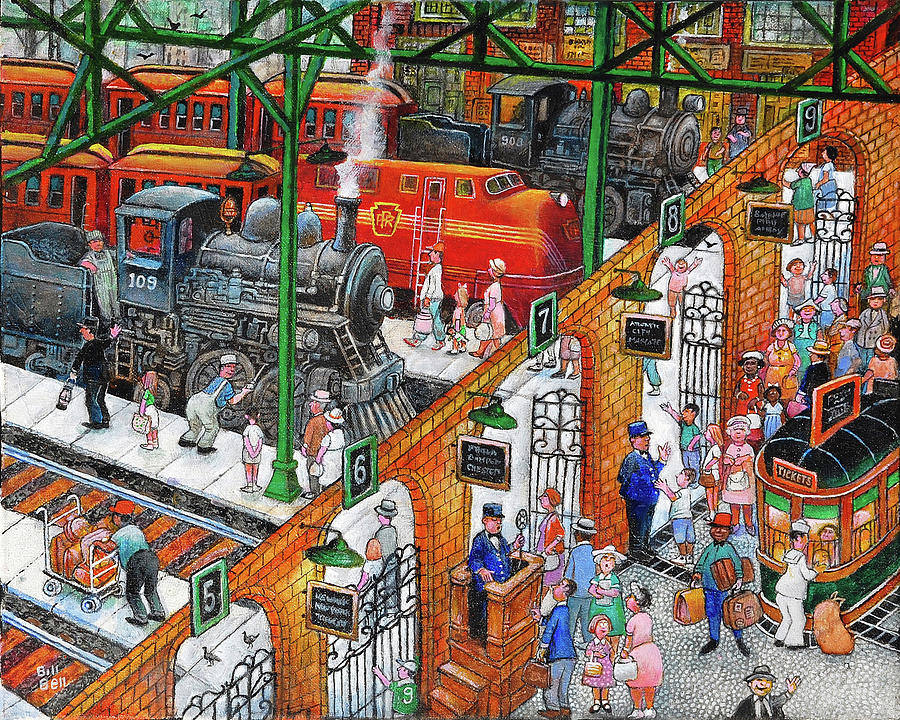
The public and art critics did not understand why Monet chose to portray the uglier side of the station.

In these paintings he portrays the clouds of steam billowing out from the trains, the busy & crowded platforms and the trains themselves.Ĭlaude Monet exhibited some of these paintings at the third Impressionist exhibition in 1877. He rented an art studio near the Gare Saint Lazare and ended up creating twelve paintings of this station. To him it symbolized the essence of modernity and industrialization that was happening all over Paris and throughout France. Monet was fascinated by this train station. Claude Monet’s Fascination with the Industrialization & Modernization of the French Capital It was through this train station that Claude Monet, then an unknown painter, commuted into Paris from Argenteuil, a rural town not far from Paris where he lived with his family. One of the stations was the grand Saint Lazare. He also directed the establishment of beautiful parks, new roads and railway stations for the French capital. For this massive urban renewal project, Haussmann built opulent buildings standing side by side on wide, tree-lined boulevards. Gare Saint-Lazare (Saint-Lazare train station) 1877īetween 18, Georges-Eugène Haussmann was busy renovating and modernizing Paris. This Houses of Parliament painting is located in room 34. The public adored them and his paintings sold like hot cakes! In 1904, this painting and thirty-six others were exhibited at Durand-Ruel’s gallery in Paris for the first time. Three years later, in 1903, Monet completed this series. He wrote to his art dealer Durand-Ruel: “I cannot send you a single canvas of London … I have them all before me, and to tell the truth not one is finished. He brought back the unfinished artworks to his art studio in France to complete. Monet did not finish these paintings in London. “Without fog London would not be beautiful.” However, he captured the changing colors and shadows by painting the view at different times of the day and under varying weather conditions. Monet captured the same view again and again.

The Sun Shining through the Fog ( 1900)įamous Claude Monet Paintings in the Musee D OrsayĬlaude Monet painted a series of oil paintings depicting the Westminster Palace, and the Houses of Parliament, in the fall of 1899 and the early months of 19 during stays in London.Īll of these paintings were painted from the same viewpoint, from a terrace at St Thomas’ Hospital overlooking the Thames. This Nymphéas Bleus painting is located in room 34. He aims to give a close-up of his beloved pond, giving an overall effect of an amorphous surface with infinite, limitless space. Claude Monet’s focus is the lily pond only. In this particular painting, Nymphéas bleus, there is no horizon or sky. Nymphaea is the botanical name for the water lily.

In fact, Claude Monet ended up painting over 250 artworks of his water lily pond. He loved his lily pond and it provided him with artistic inspiration for over thirty years. My greatest masterpiece is my garden.”Ĭlaude Monet designed and built a magnificent lily pond in his garden. “Apart from painting and gardening, I am good for nothing. Today, these gardens are one of the most famous tourist attractions in France. This house was on a huge plot of land and Monet worked tirelessly to establish the most magnificent gardens. As soon as started earning serious money, Claude Monet bought a large house in the small village Giverny. This painting was painted in Monet’s later years when he was starting to enjoy success as an artist. Nymphéas Bleus (Blue Water Lilies) Painting in the Musee D Orsay


 0 kommentar(er)
0 kommentar(er)
